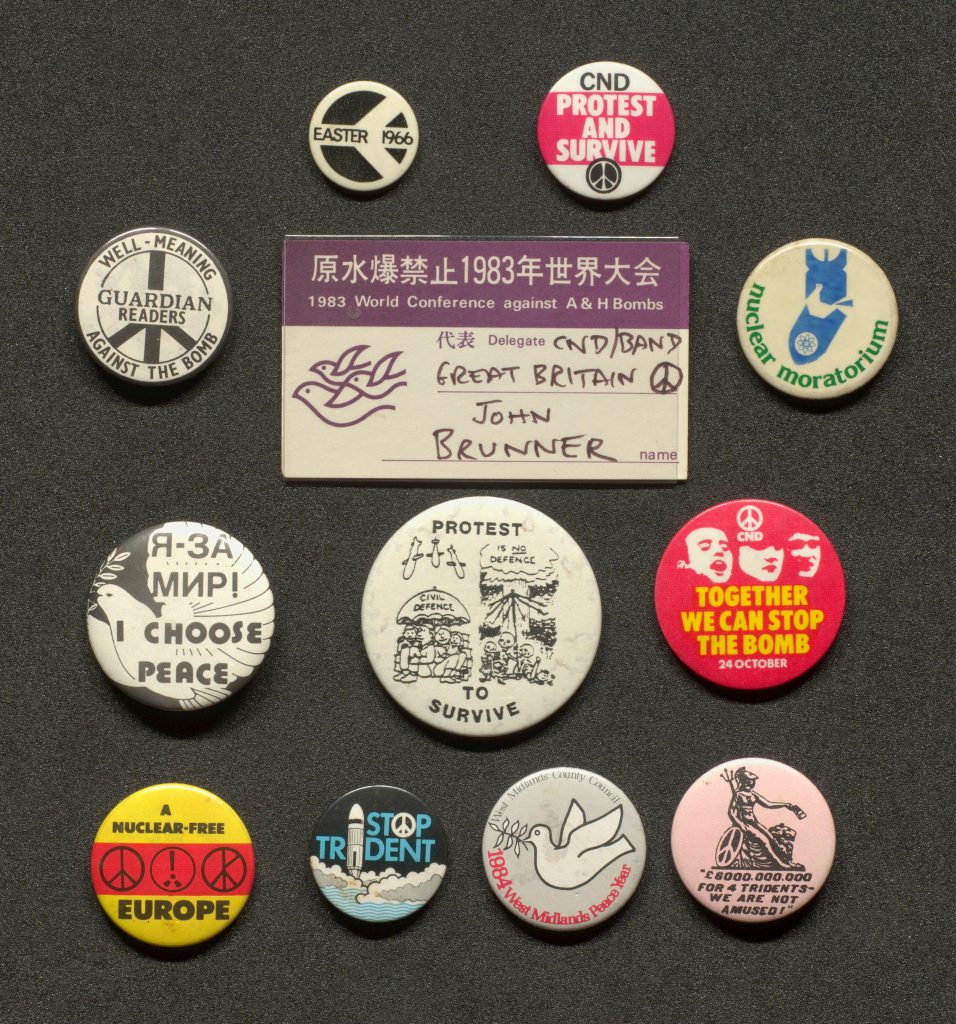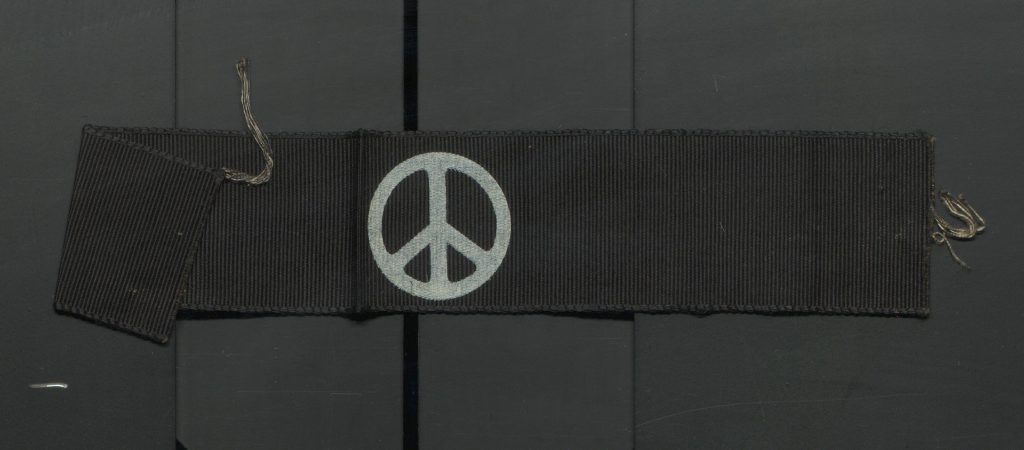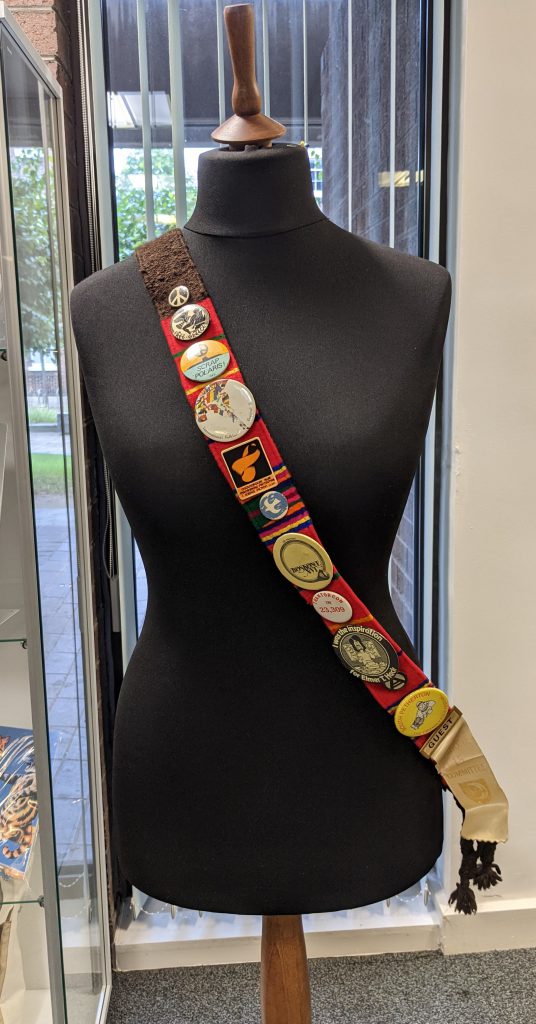With this Sunday (Sunday 26th September) marking International Day for the Total Elimination of Nuclear Weapons, it seemed a perfect opportunity to reflect on the contributions to this goal made by John Brunner, whose archive is housed here in Special Collections and Archives.
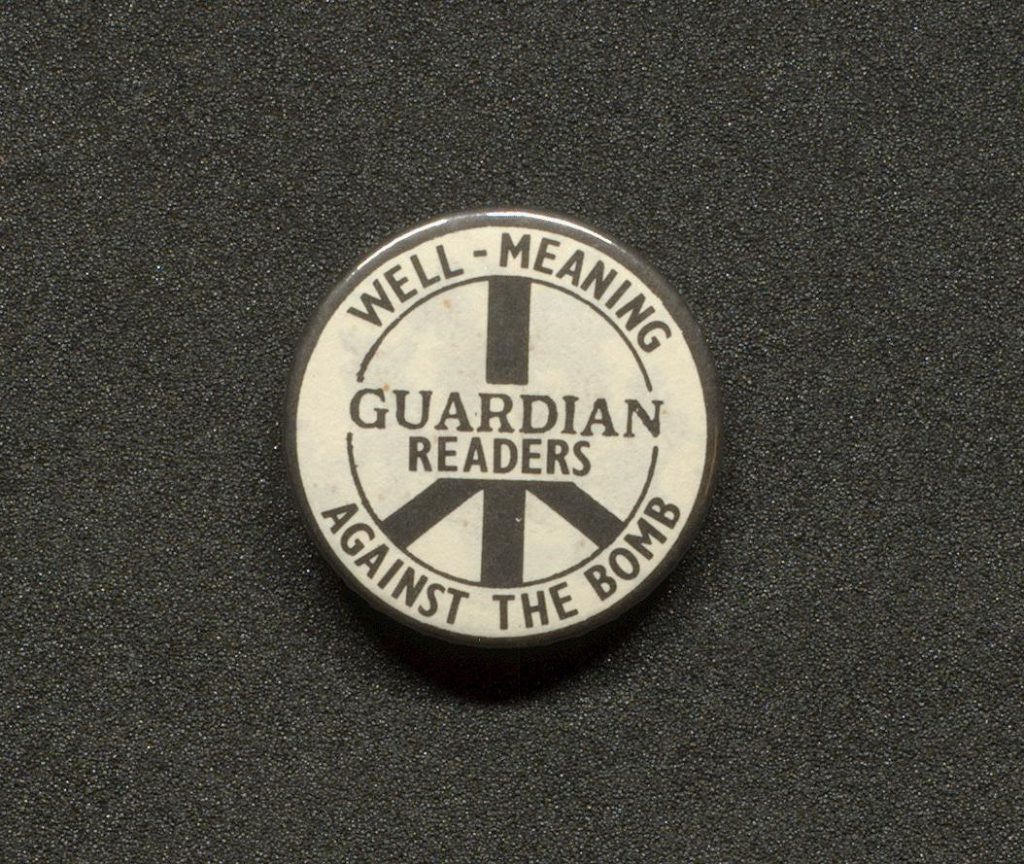
John Brunner was a prolific writer and one of the most successful British science fiction authors of the 20th century. His contributions to the field were recognised with many honours, including the prestigious Hugo Award. Fourteen of his awards are now held, alongside an extensive collection of his work, as part of the John Brunner Archive at Liverpool University Special Collections and Archives (SCA). As well as prose, Brunner wrote in other literary forms-including verse and screenplays and was a vocal anti-nuclear campaigner. His stance against nuclear weapons informed much of his writing and led him to pose, in the pages of Foundation. No. 1 (March 1972, p. 12) what he called “the central question of our time: will we, or will we not, survive the consequences of our own ingenuity?”
The Campaign for Nuclear Disarmament is an organisation that advocates for the non-proliferation and disarmament of nuclear weapons, both within the United Kingdom and internationally. The organisation has operated for over fifty years, and has drawn both heavy support and criticism from across the political spectrum since its inception in the late 1950’s. For much of his life John Brunner was involved with the CND. As early as 1958, the same year that the organisation was launched, he took part in a peaceful march from London to Aldermaston. As a record of this involvement, the John Brunner Archive holds two boxes of material and ephemera relating to anti-nuclear campaigning, which cover a more than thirty-year period of John Brunner’s life.
The earliest material we hold in the John Brunner Archive, with relevance to the CND, consists of photographs depicting participants in the first of what would become a major yearly protest, which took place in London and the south of England between 1958 and 1963. The protestors marched from central London, where large crowds gathered in Trafalgar Square to hear speakers, out to the town of Aldermaston, at a distance of some fifty two miles and the site of the Atomic Weapons Research Establishment. The photos held in the archive document moments from the first event in 1958, showing the size of the crowd that gathered in Trafalgar Square and some of the key members of the march.
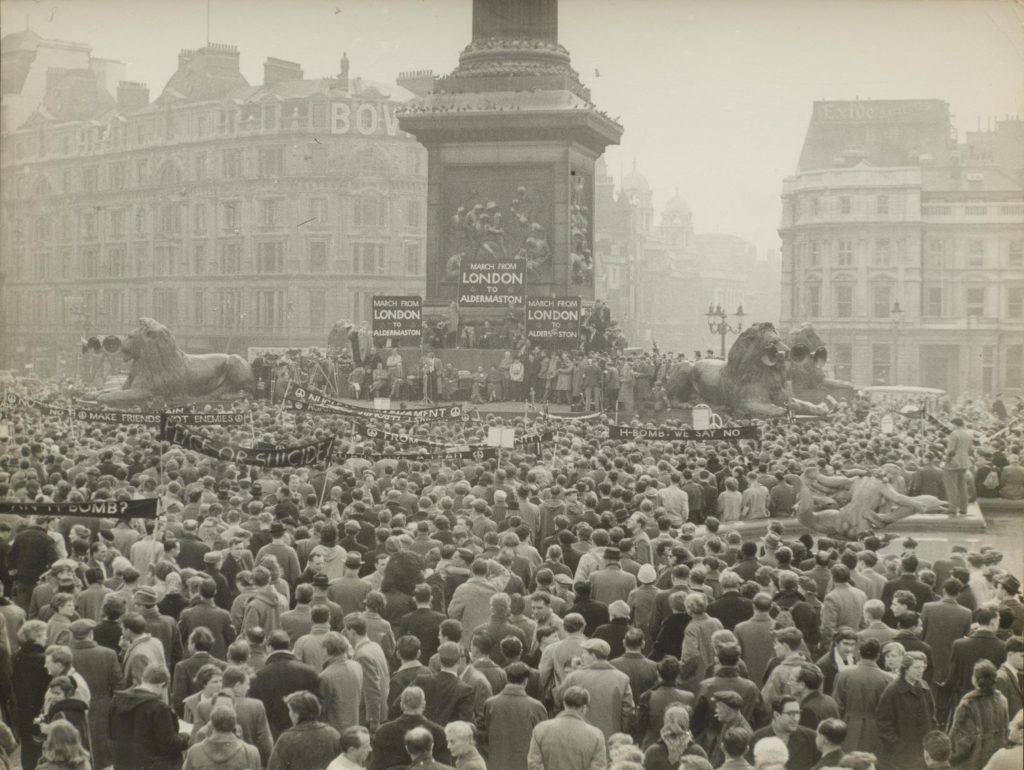
Recognisable in several of the photographs, John Brunner is pictured here with a group of musicians. He can be seen fourth from the right. Brunner composed several songs during his career; most notably, he wrote ‘The H-Bombs Thunder,’ which became an anthem for the CND and was sung, and distributed to participants, during the Aldermaston march. A caption on the reverse of this image reads: “The dog that marched to Aldermaston. Doing advance publicity work with the musical group that sang in Reading.”
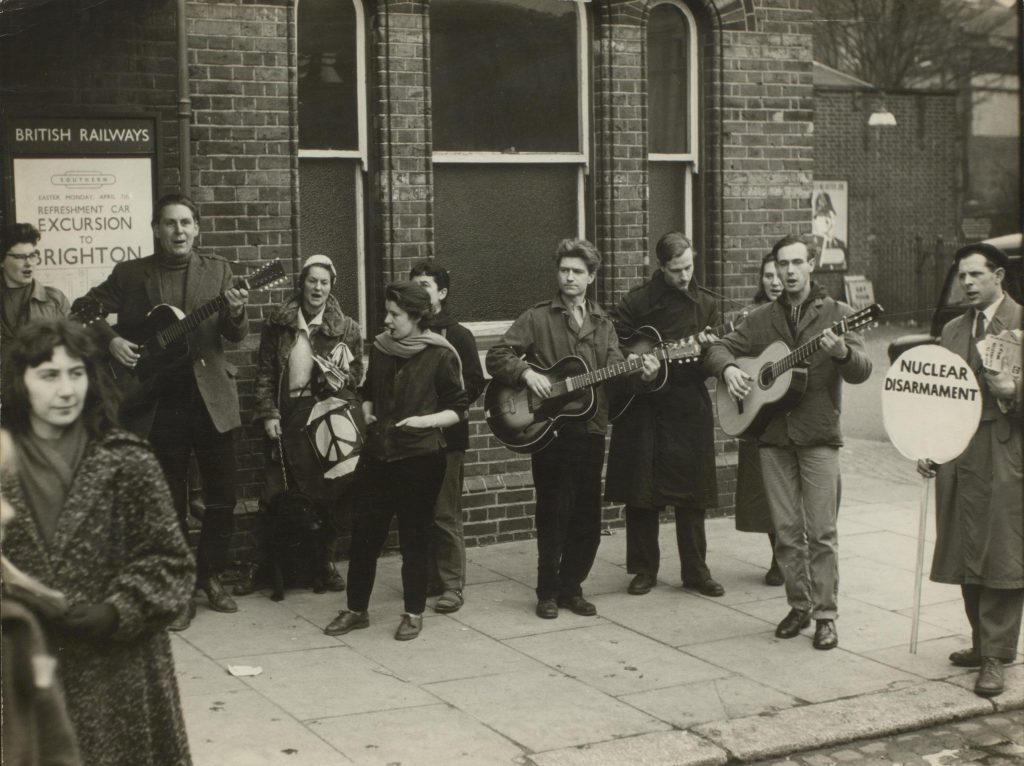
Twenty-three years after the first Aldermaston March we find John Brunner still working for nuclear disarmament, this time producing literature to speculate on the long-term effects of living in a society affected by nuclear war. Drawing on the skills he developed from a lifelong career as an author, Brunner drafted a pamphlet to the residents of his local area: South Petherton. In his ‘South Petherton and Nuclear War: a Summary of Prospects,’ Brunner highlights what he sees as the most likely outcomes of a largescale nuclear war on his local community. His impetus for producing the document was the existence of the naval base, RNAS Yeovilton, in close proximity to the town, which he feared would necessarily become a target in any all-out nuclear conflict. In writing the pamphlet he draws upon local information to base his conclusions; to give one example, he cited the possible use of a nearby spring that could well continue to function even after Armageddon, as it reportedly did in the 1976-77 drought.
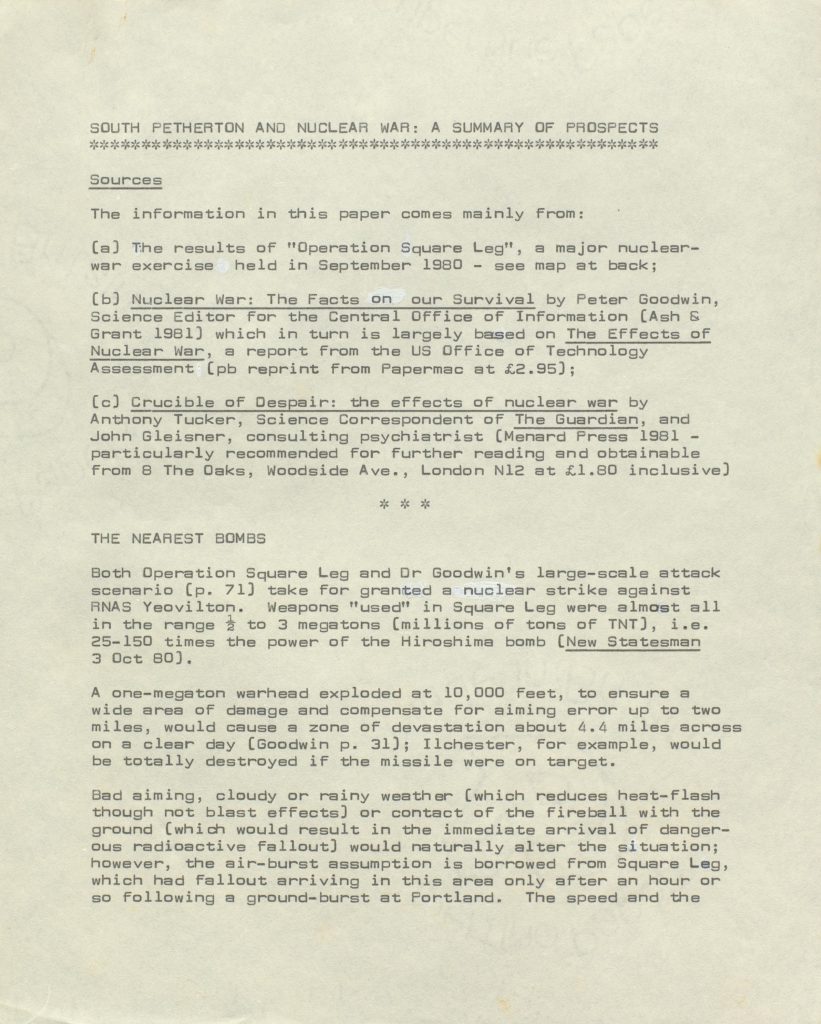
Together with papers, printed and hand-written works, the John Brunner Archive at SCA also holds a number of items of ephemera relating to the author. Along with convention pins and nametags, and several ‘Brunner Fact and Fiction Limited’ green hats, this material includes mementos from Brunner’s time with the CND. From badges with slogans critical of nuclear weapons, a Campaign for Nuclear Disarmament armband, to John Brunner’s CND sash, these distinctive items are a reminder of the long history of international campaigning and protest against nuclear weapons.
By Thomas Chisholm (Library Assistant)
